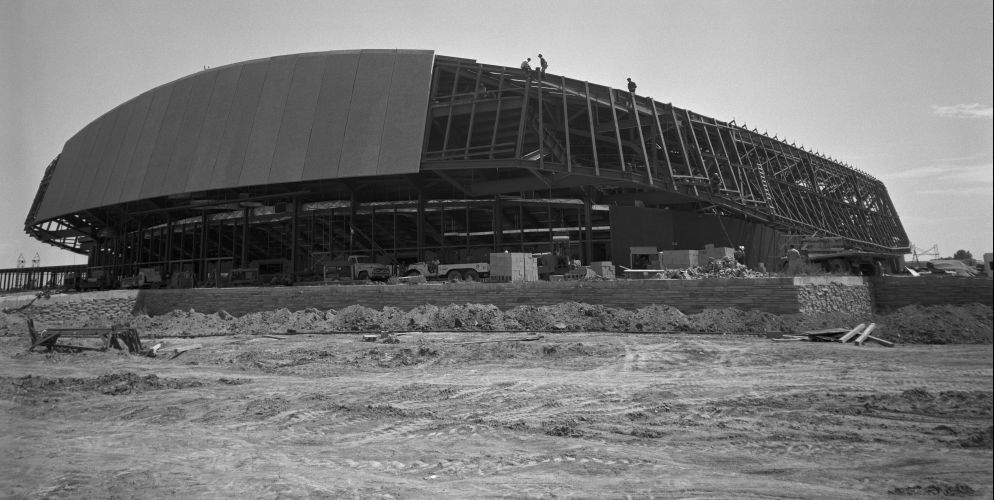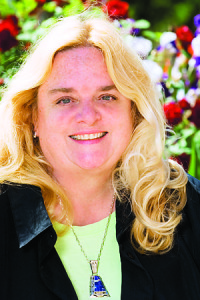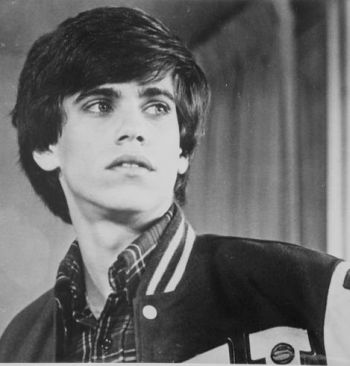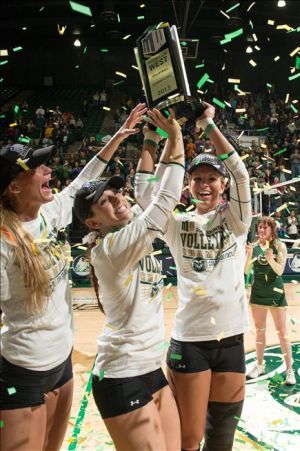
There are labs where life-changing research takes place. Classrooms where generations of students have found inspiration. Residence halls where lifelong friendships have been forged.
There’s the award-winning Student Rec Center, where the campus community gathers to sweat. The Lory Student Center, where you can get everything from books to tacos to beer to your morning cup of coffee. Or even the Morgan Library, where vast amounts of knowledge are stored and shared with the campus and community.
All are examples of important buildings on the CSU campus. And there are many others. But if you’re looking for the one building that touches every student in the most profound and lasting ways, Moby Arena might just fit the bill.
Think about it: Most students are introduced to campus as freshmen at Ram Welcome in Moby. And, like tens of thousands before them, their final moments spent before becoming alumni are spent at graduation festivities in or around Moby. In between they are entertained by sporting events and concerts, or enlightened by remarkable lecturers.
50th celebration
CSU will celebrate Moby Arena’s 50th anniversary Feb. 6 when the Rams host Nevada in a 2 p.m. game. Commemorative programs will be available, and the first 400 students will receive commemorative towels. There will be pregame and halftime ceremonies marking the occasion.
‘An amazing place’

“Moby really is an amazing place,” said Ann Gill, who came to CSU as an undergrad shortly after Moby Gym first opened its doors Jan. 24, 1966. “It’s always been a place where people gather, both the university and the community. And now, thanks to Ram Welcome, it’s the place where students start upon arrival and where we send them off into the world when they graduate.
“There’s really no other place like it on campus.”
As Moby celebrates its 50th anniversary, there is no denying its impact at CSU and the surrounding community. Sure, it has been home to some of CSU’s most memorable teams in men’s and women’s basketball and volleyball. But it is so much more than a sporting venue.
Ronald Reagan spoke here in 1976 at the state Republican convention before making his 1980 presidential bid. Apartheid crusader Desmond Tutu, former Secretary of State Madeleine Albright, conservationist Jane Goodall, former Soviet leader Mikhail Gorbachev, generals Norman Schwarzkopf and Colin Powell, columnist George Will and many others delivered memorable lectures.
Great speakers, events
“Desmond Tutu talked about what students in America had done for his country, and he thanked them,” said Gill, retiring later this summer after a long stint as dean of the College of Liberal Arts. “When would I have had an amazing opportunity like that if CSU hadn’t invited him to speak? And Jane Goodall – I wasn’t sure I would like here, but she was outstanding. It’s been such a great thing to offer our campus and community the opportunity to hear these amazing speakers.”
Moby has also hosted Native American pow-wows and conventions, cheerleading clinics and sports camps. No tractor pulls or off-road racing, but concerts – lots of them.

The Rolling Stones played there. Chicago, too. And the Doobie Brothers, Frank Zappa and the Beach Boys. More recently, Big Head Todd and the Monsters, the Fray, Ludacris and Three 6 Mafia have taken the stage.
In addition, pretty much every area high school kid from Fort Collins over the past several decades has graduated in Moby.
Hollywood history
Oh, and how many arenas can claim to have hosted a Hollywood movie? Moby can.
“One on One,” which starred Robby Benson and Annette O’Toole, was filmed in 1976 and released in 1977. It told the story of a smalltown star’s challenges playing basketball at a major university.
The film included several scenes shot in Moby and around campus, and included extras from the CSU and Fort Collins communities. Popular when it was first released, “One on One” remains a cult classic.
What Moby is best known for, however, is athletics.
The men’s basketball team has won better than 71 percent of its game since opening Moby with a 109-70 win over New Mexico State on opening night, Jan. 24, 1966. The Rams have won a couple of conference titles during that period and made numerous postseason appearances
Players like Jason Smith, Eddie Hughes, Milt Palacio, Cliff Shegogg, Mike Mitchell, Pat Durham and many others have become Ram legends while pounding the Moby hardwood.
Legends played here
Women’s basketball has won better than 64 percent of its home games since debuting in 1974, winning six conference titles. The program produced Becky Hammon, one of CSU’s true superstars – athletically or otherwise. Hammon not only was one of the greatest players in WNBA history, she made history last year when she was named an assistant coach for the San Antonio Spurs.
At one point, men’s and women’s gymnastics and wrestling – all discontinued sports – called Moby home.

No team, though, has defined Moby Madness quite the way the women’s volleyball program has. The Rams have won nearly 90 percent of their homes games and are 26-13 vs. ranked opponents in Moby. They have used that homecourt advantage to post 21 consecutive 20-win seasons and earn 21 consecutive trips to the NCAA Tournament – credentials only a handful of programs in the country can match.
“I owe a great deal of my success to Moby,” said longtime coach Tom Hilbert, who has won more games at CSU than any other Colorado college coach. “It’s a great arena – not too big, not too small – and fans really appreciate the effort of our players. It’s a very intimidating place for visiting teams, which is what I think Moby Madness is all about.”
Moby today is not the same building that rose from the open field on the corner of Shields and Plum streets in the mid-1960s. The McGraw Athletic Center was added to the west façade in 1998 to create office and meeting space, and the Anderson Academic and Training Center was added to the southwest corner in 2009 to enhance the student-athlete experience.
The more it changes …
Believe it or not, it’s actually smaller now than when it debuted. Moby records show several crowds of more than 11,000 elbowing their way in over the years, but capacity now is 8,745.
The swimming and diving program has called Moby’s east wing home from the beginning, and the Department of Health and Exercise Science calls the complex home as well. Like always, it is a haven for learning and research as well as a place for competition.
Locker rooms for several sports have undergone multiple upgrades, and the original rollout bleachers were ditched in favor of chairback seats in the late 1990s. The court itself has become a true CSU signature, featuring Rams horns spreading the length of the court that are instantly recognizable whenever the Rams play on TV.
It is, in pretty much every way, exactly what CSU’s leadership had envisioned more than 50 years when the idea for a new arena and football stadium were first pitched. Moby and Hughes Stadium not only served immediate and future needs, they were just the ticket for CSU to gain entry to the Western Athletic Conference – a move credited with saving Ram athletics.
“I’ll never forget that first night I walked into Moby in 1966,” said 82-year-old CSU legend Boyd Grant, who coached the men’s basketball team on opening night. “I honestly thought it was the most beautiful arena I had ever seen, and I still love it today. I was so proud to be there.
“That building really changed athletics at CSU, and helped our entire campus grow up. Moby really is quite a place.”